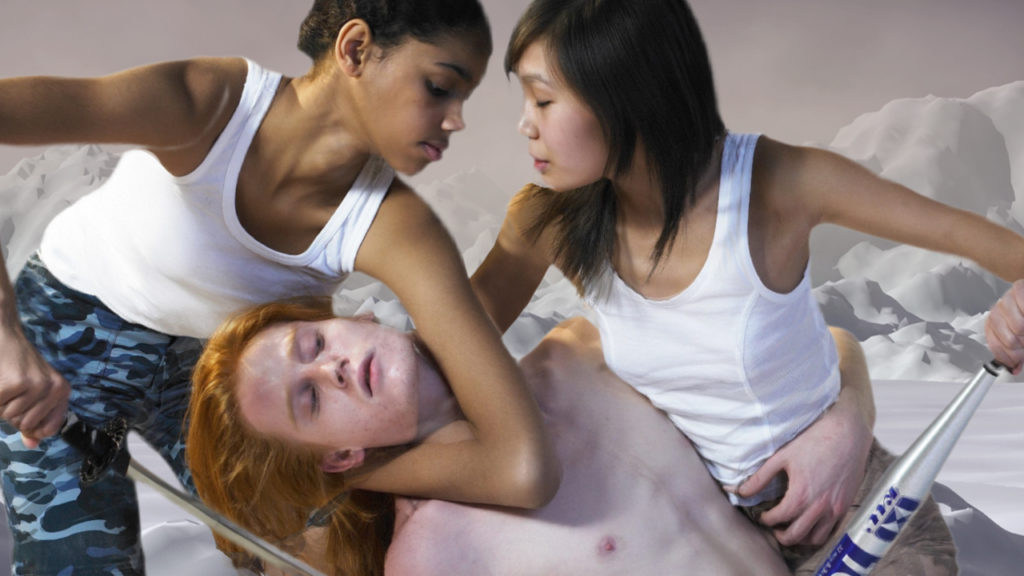ARTISTS Tatiana Arzamasova, Lev Evzovich, Evgeny Svyatsky, Vladimir Fridkes SPONSOR Ernst & Young PUBLICATION text Abby Cunnane
A volcano erupts, a plane crashes, a train derails, and pink missiles fill the sky as a troupe of beautiful, scantily clad young people fight one another with swords, baseball bats, and golf clubs on a snowy mountain top. Are these ethically diverse protagonists online avatars or Benetton models way off script? Brutal and sexy, shocking yet entertaining, AES+F’s twenty-minute video triptych Last Riot fuses fashion and fascism, set to a stirring Wagner soundtrack. Scenes recall images from old-master paintings, propaganda, advertising, and disaster and sci-fi movies.
Last Riot's battle royale occurs in an impossible, contrived, synthetic universe, which could be that of a computer game. While the diverse scenery is computer generated, the figures are animated from sequences of still photographs taken of actual people. Their movement is awkward and they are composited into their settings in an unnatural, unconvincing way. Through this Brechtian alienation technique, AES+F stop us entirely escaping into their preposterous world, as much as we might be enthralled by it.
AES+F draw on the way beautiful children are used in diverse and contradictory contexts to symbolise innocence and truth. But here, they are co-opted as killers, suggesting that some violent truth underpins our utopian representations. If the children of Last Riot are our future, what hope do we have? Guardian art critic Adrian Searle writes, ‘It is hard to think of a world quite so out of whack as this … I’m not sure if Last Riot is a Biennale highlight, or a horrible premonition of things to come.’
The Moscow group—Tatiana Arzamasova, Lev Evzovich, and Evgeny Svyatsky—started in 1987 as AES. They became AES+F in 1995 when joined by fashion photographer Vladimir Fridkes. Their work plays on current world politics, with the tension between capitalist globalisation and new and renewed ethnic and religious ideologies. For instance, their Islamic Project (1996) imagines promotional images for a future after the Muslim takeover, with the Statue of Liberty wearing a burka and the Sydney Opera House with turrets added. AES+F call this work ‘social psychoanalysis’, acknowledging prevailing anxieties surrounding East/West relations and the Islamic ‘other’.
Last Riot was made for Click I Hope, Russia’s Pavilion at the 2007 Venice Biennale. It is shown in Wellington as part of the 2008 International Festival of the Arts.

































